Don't wanna be here? Send us removal request.
Text
Political Branding
This week’s reading on pitching a brilliant idea starts out by asking why certain people succeed in getting their ideas implemented where others do not -- even controlling for the merits of an idea. Although the author ended up discussing much more how to pitch a creative idea, my thoughts when I first read the intro immediately jumped to the American political arena. This has been a space where the very same idea has gotten extremely different reactions from both sides of the aisle depending on the person, their political affiliation, and the broader macro political climate. Ideas that have worked successfully were often proposed multiple times by both sides of the aisle before they were implemented. So what changed?
Example 1: Health Care Reform
Way back in the 1990′s, 20 Republican senators co-sponsored a bill called HEART, during the 1993 Clinton push to reform the American healthcare, that included these primary features:
An individual mandate
Creation of purchasing pools
Standardized benefits
Vouchers for the poor to buy insurance
A ban on denying coverage based on a pre-existing condition.
... which is amazingly to Obamacare in it’s current form, one that’s been derided by many of today’s Republicans.
Of course, this phenomenon has also happened in the reverse. There are too many examples to cover, from Republicans calling for a doubling of immigration quotas to the growing linkage between abortion sentiment and political party.
So what takeaways do I draw from this?
First, that context matters. In politics, as in many corporate environments, it often depends on what your idea is being compared against. Often your audience is not just considering one idea, but weighing a few options. The key to selling your idea is knowing where you lie on a map, whether that map is comparing price versus reliability, project cost versus ease of implementation, or liberal versus democratic policies.
Second, as evidenced by many other branding examples, the promoter really does matter. From the personality of the pitcher (showrunner, artist, etc.) referenced in the HBR article to Harley Davidson cakes, not everyone can sell every product or idea. You have to know yourself in order to most successfully get things done.
And third, what might seem crazy to be associated with one party might just be in 20 years... indicating that the political parties might not have as strong as a brand image as American corporations who have maintained a persona year after year.
2 notes
·
View notes
Text
Branding Yourself or Your Work?
RWhen looking through the Fashion Bomb Daily and reading reviews of Claire’s book, I was struck by a tension. For a biography and self-help book to sell well, you can’t just have a successful business. You also have to be a known personality that people understand and want to hear from. But how can you do that when your work is about other, ostensibly more famous and more well-known personalities -- i.e. celebrities? Walking the line between promoting yourself and discussing others is clearly a fine one, and it’s interesting to explore how Claire (as well as other bloggers) do it.
Perusing through The Fashion Bomb Daily, the multicultural angle is obvious to anyone who looks at other fashion websites. I compared the cover of her website:

to that of other well-known fashion blogs, including the Blonde Salad:
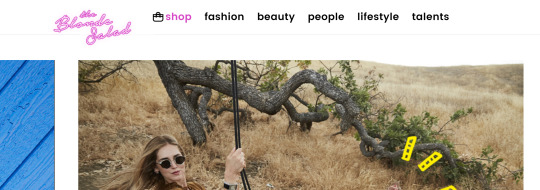
and Fashion Toast:
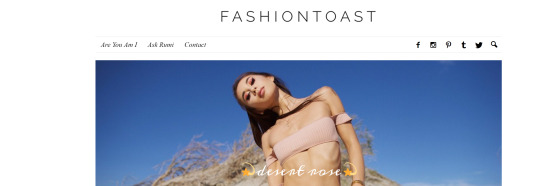
The visual difference is immediately striking, so there is no doubt that it helps Claire carve out a niche market: Claire is not trying to be everything to everyone, and is differentiating herself from the stick thin sparseness of other fashion bloggers. Although she covers celebrities, she covers a range of real body types women, rather than just presenting an ideal. This niche targeting and sense of authenticity is what sparks your consumers to be even more likely to engage, and thus creates a positive brand dynamic where the vision of the brand is co-created between consumer and producer.
So I began to wrap my head around how Claire’s brand functioned relative to the rest of the fashion world. But how to understand how Claire was able to translate that into a self-brand, one that could successfully launch an autobiography and self-help book that would have 4.9/5 stars on Amazon?
One thought I have on this issue is that this authenticity becomes ever more important when you are trying to translate the brand from your work to yourself. If Rumi Neely of the Fashion Toast tried to cover women of color, she would not be taken seriously. Claire succeeds because she is the brand: she is a credible source on the topics she is discussing and relates to her viewers point of view. Her distinctive voice allows people to build a slow relationship with her, eventually moving to the Claire’s Life section of the website where they can follow her even more specifically. This section following her daily goings-on is then no doubt a natural translation to the autobiography, and a larger persona in her own right -- rather than just covering other personas.
Regardless of my initial thoughts, I’m excited to hear Claire’s perspective on Thursday. I have no doubt she struggles with this constantly, and there is a lot more to this than I describe above. Other questions I’m excited to hear about include: How to prevent consumers from translating what they read about you to what they read about your brand? How do you deal with ghostwriters and website employees while still making your brand seem authentic and have a consistent voice? How do you live your life and be a whole, complex person while being tied to this one part of you: your job?
2 notes
·
View notes
Text
Defending Burberry’s Brand: A Two Way Street
I have strong memories associated with Burberry at the time the case was written (2003). Around this time, one of my best friends got two Burberry scarves for Christmas, and then wore them to school every day for the rest of the winter. I remember being insanely jealous and thinking they were the epitome of cool -- so much so, that I then went and asked my parents for Burberry Brit perfume for my birthday that year! So, I can personally attest to the strong brand position they built up in the early 2000′s.
And, me and my friend were probably the exact customers that Burberry was trying to target with their accessories and products lines: as suburban teenagers, we engaged with the brand (often going into stores even though we couldn’t afford the items), building a hope that we would one day buy one of their more expensive trench coats.
But as the case notes towards the end, a brand cannot always choose who their brand engages with. The HBS case mentions that a member of the Big Brother TV show wore Burberry constantly, as did hip-hop musicians. American reality TV stars and “urban youth” (to quote the case): not your traditional English roses like Kate Moss and Stella Tenant!
This concern harkens back to a couple classes ago, when we discussed how brands are built both by customers and the company itself. Customers build their own brand image, and branding is very much a conversation between both sides. Even if Burberry is concerned that high-profile individuals who don’t fit their image are wearing their brand publicly and will alienate their core base, they can’t forbid them from wearing the brand. For better or worse, the Burberry image is a dialogue between their new customers, old customers, and the company’s media.
What they can do, however, is redirect the conversation. By doing other actions to re-focus customers attention, they can help defend their brand image. Customers stay engaged and contribute to the brand equity, but now the conversation is driven in a top-down manner. Although hindsight is 20/20, it seems this is exactly what they did.
First, they launched the Art of the Trench, a curated display of people wearing Burberry trench coats in real life -- but with featured ones who are look exactly how Burberry imagines their core customer.
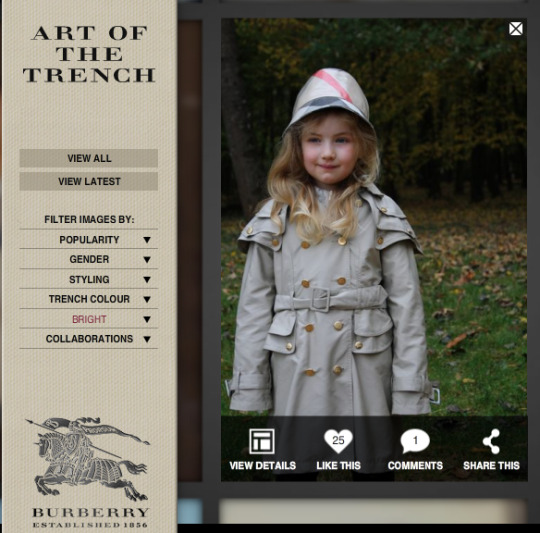
The website continues to this day, with similar goals of engaging only the customers they are focused on. The images presented, with token racial diversity, show that “real” people wear Burberry: but only the real ones that the company wants to be the face of the brand.
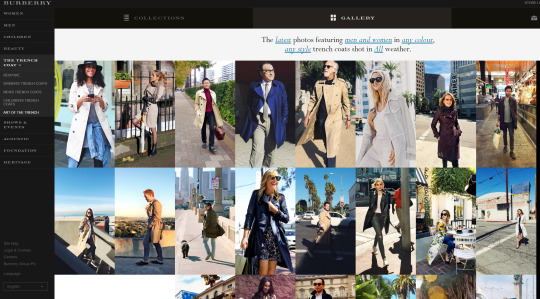
Burberry also embraced their growing Asian customer base by putting on one of their biggest, most talked-about shows ever, featuring holographic models.
youtube
The holographic runway show got a ton of press, showed their Chinese customers that they embraced their new Beijing flagship store, and allowed Burberry to project exactly the image that they wanted as they entered a new customer base -- no small feat!
0 notes
Text
Integrating Customer Service, Brand, and Company Culture
Reading the Singapore Airlines case, I was struck by the strong intermingling of SA’s brand (first-class service provided by knowledgeable, warm, gracious, and attractive employees), their company culture (of continuous improvement and training, re-evaluation of their offerings, and empowerment of employees), and the customer service they actually provide. It seems so obvious reading through the case, but SA has been able to succeed where many other airlines have failed because of this tricky integration.
Many airlines try to be all things to all people. Take United today (and pre-PR crisis): they are both increasing their business class offerings through Polaris and their economy offerings through Economy Basic. What is likely to happen is a failure on both fronts. You can either go lo-frills and remove all aspects of service while providing low fares (see: RyanAir, Southwest, Spirit, etc.), or go high-end and capture on service. But either of those strategies requires focus, and as Don Sull taught us in 15.901, choosing what not to do. From there, you have to integrate these decisions in other aspects of your company so that they reinforce each other. If United’s staff training tries to cover both premium service and a cost-savings attitude, they will fail at both, and if their choice of markets to operate in contrast with this as well, they are doomed.

Returning to SA, these reinforcing strategic choices are exactly why they were able to make money over their competitors. First, they chose a brand of first-class service with a memorable personality behind it: the Singapore Girl.

Then, they made sure their employees were up to par: with extensive training to start and reinforcement training days averaging more than 17 days a year (!), their flight attendants became conversant in everything from wine pairings to their customers sleeping habits -- no small feat when compared with other airline service. At the same time, SA was able to take advantage of their geography, relying on cheaper labor relative to competitors but still hiring only the most qualified employees due to the prestige of the job locally.
Third, this value of service and knowledge of their competitive advantage was embodied in their company culture and internalized by management. In Yap’s discussions of their bureaucratic process, I was struck by his description of the desire to remove the layers that organically evolve (p. 10). That awareness and understanding of how companies can falter is what keeps people in business for years and years -- and reinforces the empowerment and training that they encourage lower-level employees to engage in.
So, it is no wonder that SA has been able to sustain their brand recognition, profits, and customer appreciation. When all decisions reinforce each other, a company has a much higher chance of success. Even as SA’s low cost of labor advantages evaporates due to Singapore’s increasingly strong economic position, I would bet that if they continue their singular focus on service, they will be just fine.

0 notes
Text
Chilean Wine: The New “Hipster Wine”?
Reading through the Concha y Toro case and the deliberation of which direction the wine brand (and Chilean wines should take), I was struck by the description of “New World” wines as forward-thinking, innovative, simpler, fruiter, and more drinkable. Building on that reputation, I think there’s an opportunity for Chilean wines to carve out a specific niche within this innovate but less premium market segment.
I look at the success of the orange wine segment in building a unique, more trendy customer base. Because orange wine is so strange on it’s face, it could never be the premium, Bordeaux-AOC, $100+ wine served in fine restaurants. Instead, oeniphiles get to show off their knowledge by ordering such a unique wine without paying as much as they would for a top-market wine. Orange wine has therefore carved itself a “hipster” niche: people are asking for it by name, and winemakers can continue to be creative in its production, without trying to take premium, Old World wines head on.

I think Chilean wines could follow this more niche-strategy to some success, side-stepping the bottom-up/top-down debate a bit. The ideal pricing is probably somewhere around the premium segment ($10-$15), conveying quality to these oeniphiles and reducing pressure on the margins. But rather than following a “pure” bottom-up strategy, they would side-step competing with the French Bordeaux’s and make a Chilean wine a unique and non-substitutable experience. It’s easy to view a fine French wine as interchangeable with a fine Italian -- people often debate whether they should pair the Cabernet Franc or the Chianti with their steak.

But nobody orders an orange wine thinking it’s the exact same thing: they’re going for something unique and different through that choice. Chilean wines already have a few characteristics going for it that could fit this profile: top scores at the Berlin Tasting, natural geographic barriers for easy but high quality production, and burgeoning blogosphere attention to it’s unique qualities.
0 notes
Text
Enduring nature of brands
Most of us associate Corona as mostly being sold to gringos at touristy places in Mexico. It is the one with the most sales, but also in a national ranking of flavour it is one has one of the last spots. Reading through the Corona case, I was surprised at how little has changed in each company’s branding strategy. Each brand’s image seemed extremely relevant and accurate today; reflecting maybe both the commitment of the brand to their image as well as the difficulty of switching away from an image and mood once you’ve committed to it.
Corona consistently emphasized a sense of vacation in the 1980s...
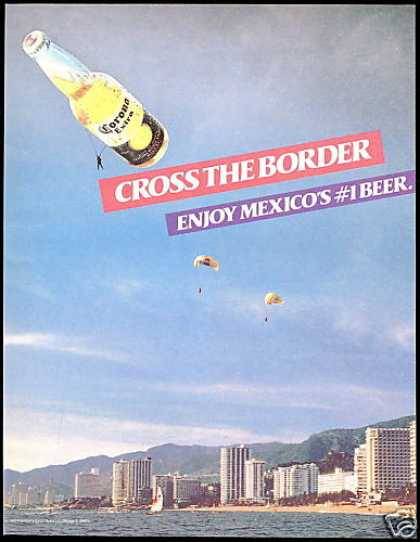
...all the way to today.
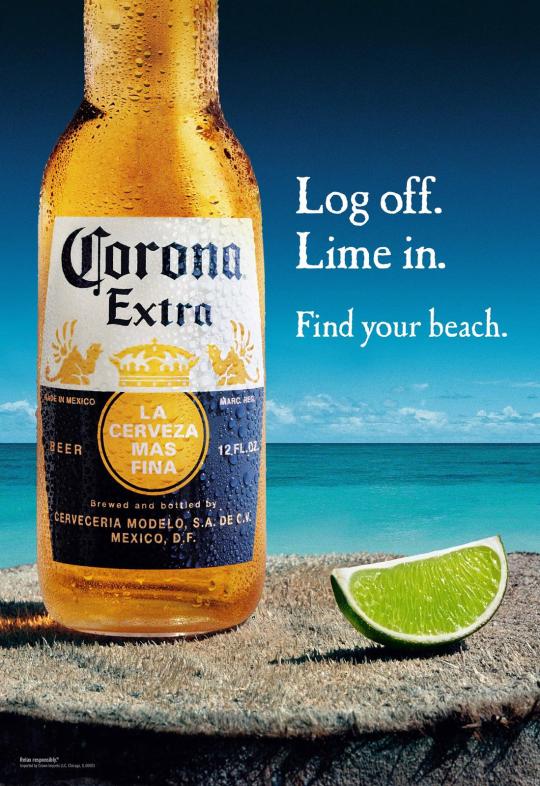
Heineken’s attempt to be a premium, foreign, interesting beer has stayed consistent too, from the 1980s...

to ads created today.
youtube
At the same time, Corona bet on demographic trends, trying to ride the growth of the Hispanic population in the US. My sense is that they succeeded in this effort, despite the branding de-coupling of Corona and Mexico in general.
“Most of us associate Corona as mostly being sold to gringos at touristy places in Mexico. It is the one with the most sales, but also in a national ranking of flavour it is one has one of the last spots...” said one opinion online.
0 notes